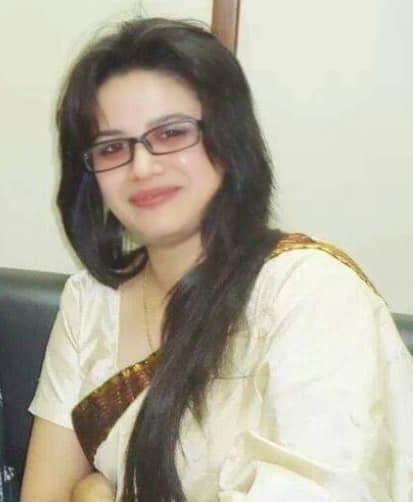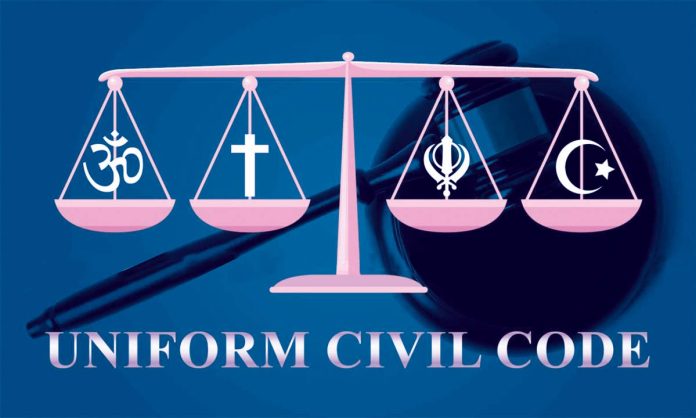प्रजासुखे सुखं राज्ञ: प्रजानां च हिते हितम् ।
Praja Sukhe Sukham Raja, Prajanam tu hitey hitam!! …. (In the happiness of the subjects lies the happiness of the King and in the welfare of the public lies his welfare).This ideal foundations of a welfare State postulated by Kautilya in ‘ Arthasastra ' advocated the extended role of ‘ Rajadharma ' in ‘Social Welfare', ‘Social Justice and ‘Social reformation'. The current Indian political discourse seems to reverberate certain essence of the kautilyan maxim when it embarked upon the extended responsibility to scrutinize socio-religious-customary prejudices like polygamy, child marriage and unilateral divorce and other entho-ideological biases. The Modi government's peg for the ‘Uniform Civil Code' is one major attempt to contain the aberrations from the basic ethos of Constitutionalism. The idea behind choosing the Constitution as a benchmark stems from the analogy between the vision for an ideal society of ‘Ram Rajya' articulated in Valmiki's Ramayana and the fundamental ideals of formulating Niti (Policy) for Nyaya (Justice) as espoused in the vision behind the Constitution of India.
December 4,1827 was that historic day in pre-indepenedent India, when every married hindu girl sensed liberation from the very awful thought, the horror and perturbation of walking up to the funeral pyre of their husband, undergoing self-immolation and get burnt alive in full senses to prove their devotion to their dead husbands . ‘The Bengal Sati Regulation (Regulation XVII)' was passed by the then Governor-General of India, Lord William Bentinck, denouncing the practice of Sati as illegal in all of British India. This was just the beginning of a revolutionary period for social reformation in India when Lord William Bentick acted in support a vociferous campaigner, Raja Rammohan Roy against social evils like female foeticide, polygamy and child marriage prevalent in the erstwhile socio-customary discourse. This was followed by another decade of social emancipation in the 1850s when Iswar Chandra Vidyasagar catapulted socio-religious reforms for abolishment of caste prejudices and widow remarriage restrictions prevalent in the Indian societal and ideological considerations. The ‘Caste Disabilities Removal Act, 1850' and the ‘Hindu Widow Remarriage Act 1856' was passed assuring legal cognition to abolition of caste and legalizing the marriage of Hindu widow.
The time frame of 1955-56 was considered a crucial span in the dynamics of Hindu personal laws when the then Prime Minister of India, Pandit Jawaharlal Neheru was assisted by Baba Ambedkar in addressing the irregularities in Hindu personal laws through the Hindu Code Bill and finally codifying a series of legislations like ‘The Hindu Marriage Act 1956', ‘The Hindu Succession Act 1956', ‘The Hindu Minority and Guardianship Act 1956', and ‘The Hindu Adoptions and Maintenance Act 1956' etc abolishing religious laws in favour of a common law code.
Judicial review and judicial activism in India are also abundant with exemplary instances when the courts have plunged into legal politicking and socio-reformative crusading whistleblowing the gender discriminative mandates that personal laws embede beneth the upper stratum of religious dictations. Citing examples ,the Mitaksara school of Hindu law deprived hindu daughters of their rights or joint heirship in their parental property until the Lata Mittal (1985) case wherein judiciary barged in, to ensure equal rights of daughters in ancestral property. In C Masilamani Mudaliar v. Idol of Sri Swaminathaswami Thirukoil, 1996 the Court pressed for rectification of pre-existing gender-based inequalities and disabilities in matters related to property rights of Hindu female.Issuing strong-worded observations the Court opined that “The basic structure permeates equality of status and opportunity. The personal laws conferring inferior status on women is anathema to equality. Personal laws are derived not from the Constitution but from the religious scriptures. The laws thus derived must be consistent with the Constitution least they became void under Article 13 if they violated fundamental rights.”
In similar instances, the Kerela High Court in December 2022, struck down a key condition for divorce among Christians, bringing the law at par with Hindu and other Marriage Acts . The Court held that the ‘One-Year Wait' precondition for filling mutual divorce under ‘The Christian Divorce Act ,1869' is unconstitutional, violates fundamental rights and therefore should be amended. Moreover, under the ‘Christian Marriage Act of 1872', ‘adultery' cannot be framed as a ‘valid ground for divorce' by the Christian wife. However, the Christian husband can divorce a Christian wife on the ground of ‘adultery'. Such inconsistencies in these antiquated laws were pinpointed by the Kerela High Court in Annie E.J vs. Union of India , terming them violative of Article 21 and Article 14 of the Constitution of India.
The rigorous conundrum pertaining to the need for Uniform Civil Code in India was triggered in 1985 by the legal-political …….,Shah Bano Begum vs. Union of India wherein the Supreme Court of India look one a huge leap forward to look past the narrow burrows of personal laws for the sake of Constitutional morality. In this case the Court ,by allowing Muslim women to avail maintenance under Sec. 125 of the CrPC pressed for introduction of the UCC for Constitutional ethics and protection of women burdened under the irrational, regressive and outdated personal laws. The landmark judgement in Shayara Bano vs. Union of India (2017) that declared ‘unilateral instantaneous divorce' or talak-e-bidat(triple talaq) unconstitutional flagged off another navigation of hope in rippled waters.
The narrative of protective privileges for customary law is often hurled and harpooned as a weaponry against the execution of uniform civil code. In a number of cases the Judiciary has showcased how customs and traditions, when left unchecked can lead to severe injustice to a particular class of society, and why the rule of law holds higher authority than such practices. The Sabrimala verdict (Indian Young Lawyers' Association v. State of Kerala) restoring equal rights of women to enter inner sanctum sanctorum of the Sabrimala Shrine , the Jallikattu verdict (Animal Welfare Board of India v. A. Nagaraja, (2014) 7 S.C.C. 547) banning the cruel practice of bull-taming(jallikattu) and the strucking down of the Santhara (voluntary fast-unto-death) in Nikhil Soni v. Union of India & Ors, 2015 are just a few examples wherein the judiciary have asserted that customary laws cannot be placed outside the purview of Constitutional scrutiny, equity and ‘Rule of Law' .It is also pertinent to take due cognizance of the fact that the ‘Hindu Code' defines custom and usage as ‘Any rule which, having been continuously and uniformly observed for a long time, has obtained the force of law…in any local area, tribe, community, group or family, provided it is certain and not unreasonable or opposed to public policy'.
Such progessive and reformative alignment of the judiciary should be sufficiently complimented and supplemented by stringent State action to achieve the real-time execution of legal letters. Goa is such senses has carved a niche in terms of atleast showing the required political will for good. Goa is the only Indian state to have UCC and as such everyone regardless of religion or gender has to follow a common set of rules . A Muslim having a domicile in Goa cannot perform triple talaq, polygamy, and Nikah Halala and flouting of such common code will be considered as an offence. In Nagaland , the longstanding debate of approving 33% reservation for women in Urban Local Bodies saw some light across the tunnel when the Supreme Court asserted to the Nagaland government that if there is any customary law in the state that prevents women from getting reservation in urban local bodies, they won't hesitate to declare it unconstitutional. The State should be willing to perform the paraphernalia's of law enforcement if socio-legal reformations are pitched for.

Kangkana Goswami Bharadwaz is a regular columnist, currently serving as a faculty of law in National Law University and Judicial Academy, Assam, also engaged as a research scholar in the field of law and juridical science and has many research papers to her credit in national and International journals, currently serving also as a media panellist of the Bharatiya Janata Party, Assam Pradesh



